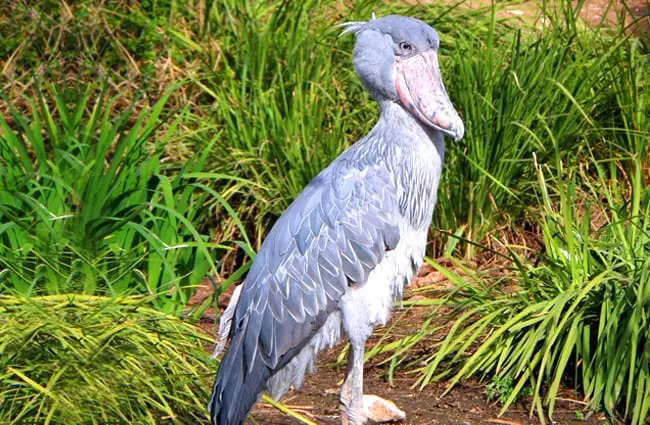


This isn’t to say it wouldn’t or couldn’t happen, in freak circumstances. No records exist of shoebills killing or attacking humans. These dinosaur-like waders are sometimes dubbed “Death Pelicans” – snakes up to 1 m (3.2 ft) in length pose no problem for a shoebill to catch and kill, and crocodiles of a similar size are also among their most common larger targets. They have strong, razor-sharp beaks that allow them to decapitate any prey they catch. Shoebills prey on crocodiles, especially juvenile ones. When visitors do not greet him with a bow, the bird moves away, and will not allow visitors to touch or approach him. When visitors greet Sushi with a bow, the greeting is returned, and visitors may even be able to touch him. Observed behavior at a wildfowl center in Uganda describes what happens when someone bows to their resident shoebill Sushi – and what happens when they don’t. Read on to find out more about these elusive, giant storklike birds and their deadly hunting methods, please do read on.

Human hunting contributed significantly to the decline in numbers, and only between 5,000 and 10,000 birds remain in the wild. Shoebills are a vulnerable species with few natural predators. In fact, the opposite is more likely to be true. People are not at risk from shoebills, and there are no records of attacks on humans by these “prehistoric throwback” wading birds. Also known as a whalehead, the breathtaking, prehistoric-looking shoebill stork has been called 'the most terrifying bird in the world,' 'Monsterface' and even 'Death Pelican.'. Shoebill storks are aquatic birds with fairly dark-colored long legs with a tarsus of length range of 21.7- 25.5 cm, their feet are large consisting of along. Gasp and behold the rare Balaeniceps rex. Their powerful bills are used to catch and kill prey – usually fish from the wetlands on which they live – but they are also capable of successfully hunting larger mammals, reptiles and waterfowl. The shoebill stork stands up to 5 feet (1.5 meters) tall and has a wingspan that can reach 8 feet (over 2 meters). For flight, they will soar on thermals above their territory. Shoebills are non-migratory, but will make small movements between nesting and feeding zones. Even breeding pairs will forage at opposite sides of their territory. Only if food is in short supply will they be seen foraging near each other. Shoebills are wading birds, native to specific regions of central Africa including Uganda, Zambia, Tanzania, and Sudan. Shoebill storks are never found in groups. However, their strong, wide beak enables them to target some rather sizable prey including crocodiles, lizards and even large antelopes. Keep reading as we investigate whether this is one species that really shouldn’t be judged on looks alone.ĭespite their somewhat sinister appearance, shoebills are generally calm, docile birds that do not pose a risk to humans. Known for their rather intimidating appearance, with dinosaur-like features and a strong, powerful beak, shoebill storks may look highly threatening, but does their behavior match their fearsome appearance? Are shoebills dangerous to humans?


 0 kommentar(er)
0 kommentar(er)
